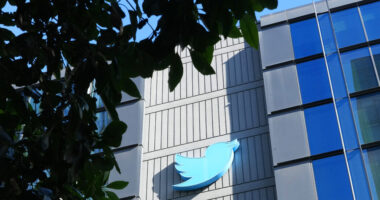Americans increased their spending at a cooler pace in February, as the Omicron surge of Covid-19 eased but inflation remained high amid Russia’s invasion of Ukraine.
Consumer spending rose at a seasonally adjusted 0.2% pace in February from the month before, the Commerce Department said Thursday, down from a revised 2.7% rate in January. Personal income increased by 0.5% in February over the prior month, a pickup after it was nearly flat in January.
Annual inflation rose to 6.4% in February, using the department’s personal-consumption expenditures price index, the Federal Reserve’s preferred gauge. Annual core PCE inflation, which strips out volatile food and energy prices, rose to 5.4% in February.
In February, the wave of Covid-19 infections from the Omicron variant faded, leading consumers to boost spending on services like dining in restaurants and traveling by 0.9% from January, while goods spending declined.
Travel, both for leisure and business, has rebounded faster than expected from Omicron, airline executives said. Major U.S. airlines said earlier in March that their revenues in the first quarter of 2022 will likely be at the high end of what they had expected at the start of the year, or better.
Kim Cook, the owner of Love to Travel, a tropical destinations-focused travel agency in Overland Park, Kan., said that her customers aren’t letting high airline ticket and hotel prices deter them from booking trips, especially with large groups of friends and family.
“They say, ‘I know it’s going to be pricey, but we haven’t been anywhere in two years, we really want to do this,’” Ms. Cook said. After building up savings during the pandemic, “they’ve got the money to burn.”
Consumers are sending mixed signals about how they feel about the direction of the economy. The Conference Board’s consumer-confidence index for March showed that consumers are optimistic about the Covid situation and the labor market but are concerned about the future impacts of Russia’s invasion of Ukraine on inflation. The invasion pushed up energy and commodity prices, adding to snarled supply chains and goods shortages that were already exacerbating price pressures.
“A lot of the reason we see higher prices is because consumer demand is so strong,” said Alex Lin, U.S. economist at Bank of America. “Businesses aren’t yet concerned that they’re losing pricing power,” he said, but that could change if inflation continues to rise and consumers deplete their savings.
While companies for the most part say they can pass along price increases, they warn there are limits to what consumers will be willing to tolerate before high prices begin to cut into demand.

Meghna Marathe, a consultant in Jersey City, N.J., expecting her first child in August with her husband, says impending parenthood has made her much more cost-conscious than usual.
Photo: Meghna Marathe
Inflation and shortages have already pushed consumers to switch from more expensive brands to cheaper options, survey data shows. About 70% of U.S. shoppers said they had purchased a new or different brand than they had prepandemic, according to a survey conducted from May 2020 to August 2021 by private-label consulting company Daymon Worldwide Inc.
“Prices will force the consumer to shift,” said Lindsey Piegza, chief economist at Stifel Financial Corp. “When you’re talking about disrupting two economies that play major roles in energy and agriculture, that will affect consumer staple prices.”
Meghna Marathe, a 29-year-old consultant in Jersey City, N.J., is expecting her first child in August with her husband. She said impending parenthood has made her much more cost-conscious than she usually is, a change that has only been exacerbated by inflated prices.
“I’ve always kind of been able to, for the most part, not hesitate to purchase something,” she said. Now, when she is out shopping for the baby, she’s more cost-conscious and focused on what the baby needs, rather than what might be “just fun to have.”
“A lot of expecting moms go into stores and see all the cute stuff they can buy for the nursery—I’ve been window-shopping, but I haven’t bought any of that,” she said.
Write to Gabriel T. Rubin at [email protected]
Copyright ©2022 Dow Jones & Company, Inc. All Rights Reserved. 87990cbe856818d5eddac44c7b1cdeb8









